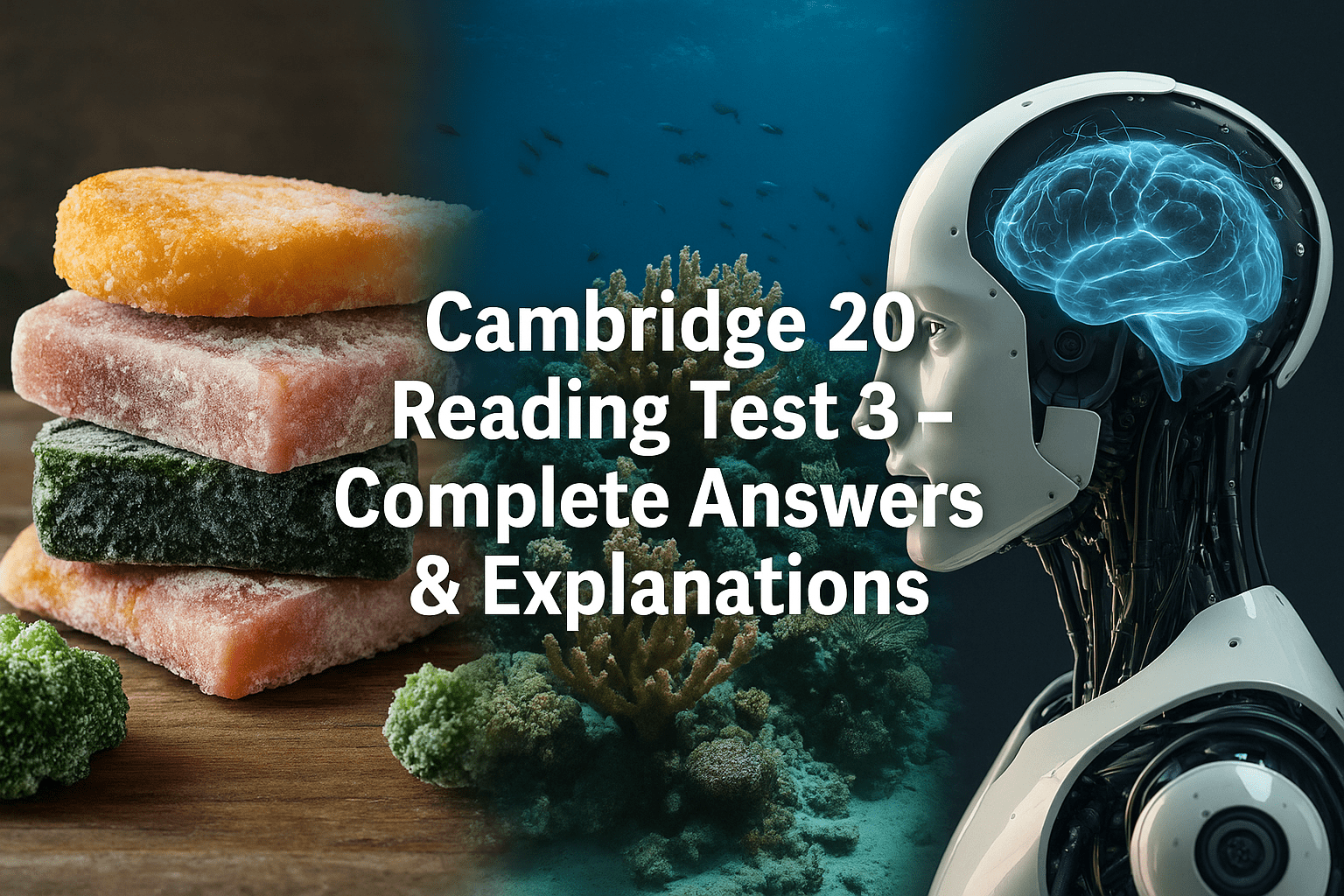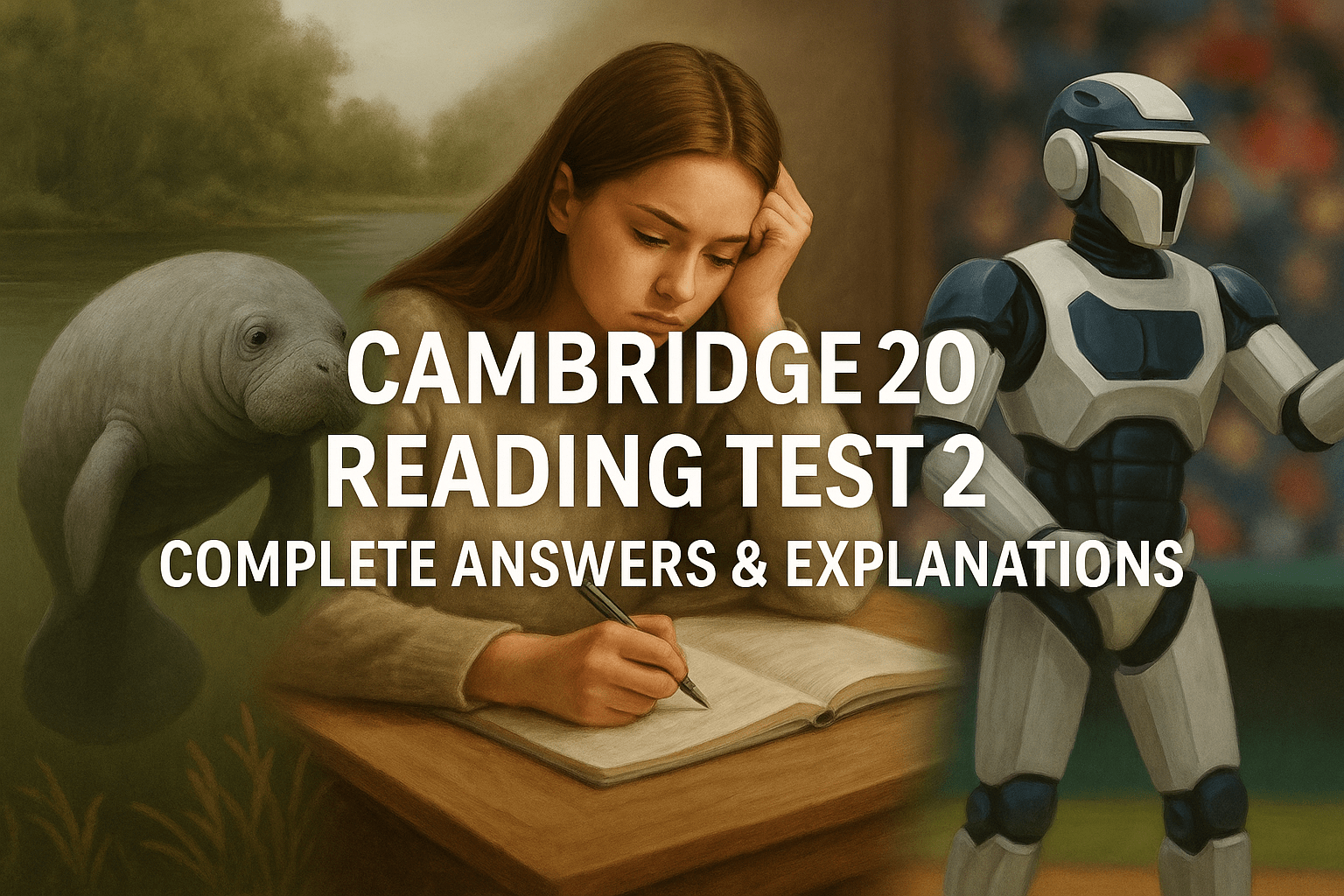Overview
Hi there, IELTS ZONE learners! I just finished working through Passage 1 of Cambridge IELTS 19 Reading Test 1 — “How tennis rackets have changed” — and I wanted to walk you through it with me. After more than 10 years of preparing students from all over the world for the IELTS exam, I’ve seen the same challenges pop up again and again — especially in the Reading section. When I was studying for IELTS (yes, those long nights and practice drills!), the reading section used to stress me out the most. But over time, I started to spot patterns and tricks the examiners use — and it made a world of difference. Let’s break this passage down together, just like I would if we were studying side by side. My Personal Strategy After years of working with IELTS students from around the world, I’ve developed a reliable approach that helps make each passage more manageable. I usually begin by skimming the passage for about two minutes. During this time, I’m not trying to understand every detail — I’m just looking for names, years, unusual terms, or repeated ideas. For this passage, words like “customization,” “modification,” and specific player names like Andy Murray or Pete Sampras stood out. This quick scan gives me a mental map of the text, which makes it easier to locate answers when I start the questions. Once I’ve done that, I dive straight into the questions — now with a clear sense of where I might find the information I need. Let’s walk through them together.Description
Questions 1–7: TRUE / FALSE / NOT GIVEN
1. People had expected Andy Murray to become the world’s top tennis player for at least five years before 2016.This question wants to know if Andy Murray was widely seen as a future world number one as far back as 2011. When I looked in the first paragraph, I found the sentence: “Yet five years previously, he had been regarded as a talented outsider who entered but never won the major tournaments.” That doesn’t sound like someone people expected to be number one — in fact, it suggests the opposite. He was seen as talented, yes, but still an outsider — not someone on track to top the world rankings. That’s why I confidently chose FALSE
2. The change that Andy Murray made to his rackets attracted a lot of attention.
This question is testing whether the change was well-known. In paragraph 2, the passage says: “Another change was so subtle as to pass more or less unnoticed.” That means it didn’t attract much attention at all — quite the opposite. So, based on this clear contradiction, I chose FALSE.
3. Most of the world’s top players take a professional racket stringer on tour with them.
Here, the keyword is “most.” I looked carefully and found a quote from a UK-based professional stringer in paragraph 3, but nowhere does the passage mention how many players actually travel with stringers. Since the information isn’t there, I decided the answer is NOT GIVEN.
4. Mike and Bob Bryan use rackets that are light in comparison to the majority of rackets.
This one was easy to catch. In paragraph 3, the passage says: “The rackets they use now weigh more than the average model.” That directly contradicts the statement in the question, which talks about lighter rackets. So I went with FALSE.
5. Werner Fischer played with a spaghetti-strung racket that he designed himself.
The passage mentions Werner Fischer in paragraph 5, saying he “started playing with the so-called spaghetti-strung racket.” But it doesn’t say anything about whether he designed it himself or not. Since that detail is missing, I chose NOT GIVEN.
6. The weather can affect how professional players adjust the strings on their rackets.
In paragraph 6, the passage says players adjust string tension based on “various factors including the court surface, climatic conditions, and game styles.” The phrase “climatic conditions” clearly refers to weather, so this one was definitely TRUE.
7. It was believed that the change Pete Sampras made to his rackets contributed to his strong serve.
Paragraph 8 gives us exactly what we need: “Much of the serving power of US professional player Pete Sampras was attributed to the addition of four to five lead weights onto his rackets.” This matches perfectly with the idea in the question. That’s why I chose TRUE.
Questions 8–13: Notes Completion
8. paintIn paragraph 3, the Bryan brothers say they’ve “even experimented with different kinds of paint.” Since the question asks what changes they made to their racket frames, paint is the perfect answer.
9. topspin
Paragraph 5 talks about the spaghetti-strung racket and how it “generated so much topspin that it was quickly banned.” That was the effect it created, so the answer is topspin.
10. training
Later in the same paragraph, it says that racket modification is “equal in significance to nutrition or training.” The question compares it to players’ diets — and training fits the comparison. So the answer is training.
11. intestines
Paragraph 7 states: “All tennis rackets were strung with natural gut made from the outer layer of sheep or cow intestines.” That’s a clear, direct match. The answer is intestines.
12. weights
In paragraph 8, we read: “…the addition of four to five lead weights onto his rackets.” That’s what was added to the frame, so the answer is weights.
13. grips
The last paragraph says Gonçalo Oliveira “replaced the original grips of his rackets.” That’s the part he changed, making grips the correct answer.
Examiner Traps and How to Outsmart Them
Examiners love using small twists—like using “most” when the passage only mentions one or two examples, or flipping meanings with words like however or but. In this passage, Questions 1 and 2 tested our ability to spot contradiction. Questions 3 and 5 tried to lure us into assumptions. The best way to avoid traps? Stick to what’s written. Don’t add your own logic. Read exactly what’s there. Underline keywords. Read the sentence before and after any quote you think matches.If you need help mastering these traps, check out our detailed guide on Common IELTS Reading Mistakes and How to Avoid Them and practice your skills on our IELTS Reading Practice Tests.
My Final Takeaway
Skimming first helped me locate ideas fast. Then, instead of jumping to answers, I always double-checked the exact sentence and asked: “Does this fully support or contradict the question?” That little habit makes all the difference.If you’re new to IELTS Reading, don’t miss our Complete Guide to IELTS Reading to understand all the question types, scoring, and strategies.
Hope this breakdown helped you understand not just what the answers are, but why. Stay tuned for Passage 2 – and remember, mastering IELTS Reading is all about mastering the examiner’s logic. You’ve got this!
Looking for more help with TRUE/FALSE/NOT GIVEN questions? Explore our IELTS Reading Question Types breakdown for targeted practice and tips!





